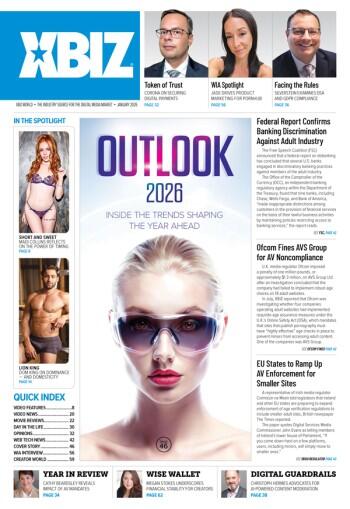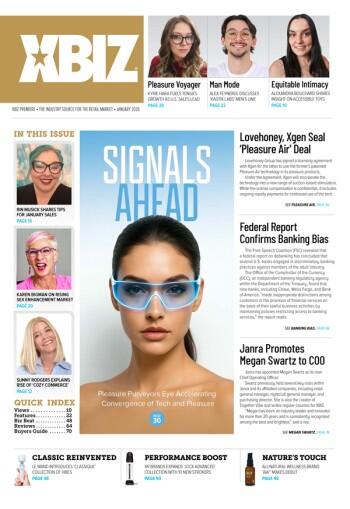When it comes to brick-and-mortar retail, getting shoppers in the door is only the beginning. Once they are inside, catching their eye and getting them to open their wallets is a whole other ballgame — both for retailers, who want shoppers to spend as much money as possible in their stores, and for manufacturers, who want that money spent on their products specifically. The key to success for retailers, manufacturers and happy customers? Solid in-store marketing.
In-store marketing refers to various methods for promoting specific brands within a physical store. This can include signage, displays, testers and interactive demos, free gifts and samples, in-store events and appearances, and more. The ultimate goal, of course, is to convert browsing visitors into paying customers.
Using signage, displays, bundles, planograms and more can make in-store marketing easy and fortify retailer/manufacturer relationships too.
However, there is more to in-store marketing than simply having signs and posters on slatwalls. While not every store has the budget for large-scale promotions, there are affordable options that can help retailers make the most of their floor space with maximum effect and eye appeal, while enabling manufacturers to manage inventory flow more efficiently as well as control how their products are presented on the floor. Let’s review some strategic choices that can help shoppers more easily navigate the store and find what they’re looking for — or what they didn’t even know they wanted.
Create timely, eye-catching displays
Get creative with whatever social or cultural trends might be happening at the moment. Make a “Hot to Go” table, celebrating Chappell Roan’s well-deserved music industry moment with tingling lubes, warming vibrators, pink pasties and apparel. Showcase a selection of products that are “brat” — bonus if any are neon green — with apples, Von Dutch hats and other accents in homage to Charli XCX’s album of the summer. Show shoppers they can skip “hawk tuah” with curated lubes, each with a little card highlighting why it’s a go-to for a certain kind of oral pleasure. The ideas are endless!
Pro tip: If you lack the budget to buy POPs or the pretty acrylic shelving some manufacturers offer, try creating a DIY display. For example, a folding table with cardboard boxes of varying heights, with a cloth draped over each, can make for an effective multi-tiered display to showcase complementary products that make great add-ons and impulse buys.
Offer freebies
Manufacturers often create branded swag to go along with certain product releases, so find out what’s available through your distributor or preferred sales rep. What enhancers have samples you can offer at the point of purchase? What lubes have pillow packs you can toss into bags? What brands have keychains, buttons or pins you can include? Can you create a coupon code for shoppers to use with their next purchase from your store?
Host events, demos or workshops
Many manufacturers have “road warrior” sales staff with sex education experience who travel from store to store offering demos or workshops to staff — and some can even help host an in-store event for the public. Talk with sales reps to see which brands provide this kind of support and brainstorm what mutually beneficial community event could work for everyone involved.
Talk to manufacturers
Pleasure brands know that most stores could benefit from some help in these efforts. Contacting them directly can keep you updated on what kinds of promotions, deals and marketing tools are available to support different product lines. For instance, many manufacturers have dynamic planograms and hugely discounted bundles that can give your store the aesthetic upgrade you’re looking for while saving big on in-demand brands. Let’s go a bit more in-depth about those options.
Bundles
Sometimes, the in-store marketing process starts with product orders, because retailers need to focus first on inventory. One of the most effective ways for stores to set themselves up to succeed in this phase of the process is to source bundle deals.
Bundles are typically designed to showcase a particular brand or collection and its top sellers, along with promo or display items as bonuses. These can include tester units, physical displays, posters or window clings, giveaways or gifts with purchase, or even higher-level signage options.
For manufacturers, bundles are a fantastic opportunity to promote individual brands while reducing inventory waste, freeing up warehouse space and saving on holding costs. They also encourage larger buy-ins and give your products an in-store boost thanks to promo materials that help the products sell themselves.
Planograms
When it comes to powerful, effective in-store marketing that makes smart use of space while staying within budget, nothing beats a planogram — a preplanned, presized display that comes complete with the items to stock, signage or shelving and the precise location for each item. These can be ordered according to footprint dimensions, which means the manufacturer handles the layout process, so stores can spend less time planning and more time focusing on bringing in sales.
For manufacturers, planograms are a terrific way to show that you truly support retailers while being smart and strategic about your branding, inventory and forecasting. They provide a golden opportunity to offload a larger amount of product with a single sale and guarantee that your products will be beautifully showcased in the shop exactly as you want them.
For retailers, planograms are a one-and-done, set-it-and-almost-forget-it marketing marvel that maximizes store space. Since the manufacturer preplans them, the most challenging work has already been done. Beyond that, they provide retailers with a variety of items from a single brand laid out in an aesthetically appealing way that’s easy on the eye and easier for shoppers to navigate.
When in-store marketing is done right, it becomes easier for retailers to stock and showcase a more extensive selection from in-demand brands and for manufacturers to enjoy the fruits of their preplanning labor. Shoppers can more readily find what they are looking for, plus discover new brands and products. Using signage, displays, bundles, planograms and more can also make in-store marketing more streamlined and fortify retailer/manufacturer relationships.
When manufacturers, retailers and solid in-store marketing strategies come together, foot traffic converts to paying customers, which means everyone wins.
Rebecca Weinberg is an award-winning executive with more than 20 years of experience in the adult industry. She is the president of multi-award-winning pleasure product manufacturer XR Brands.








